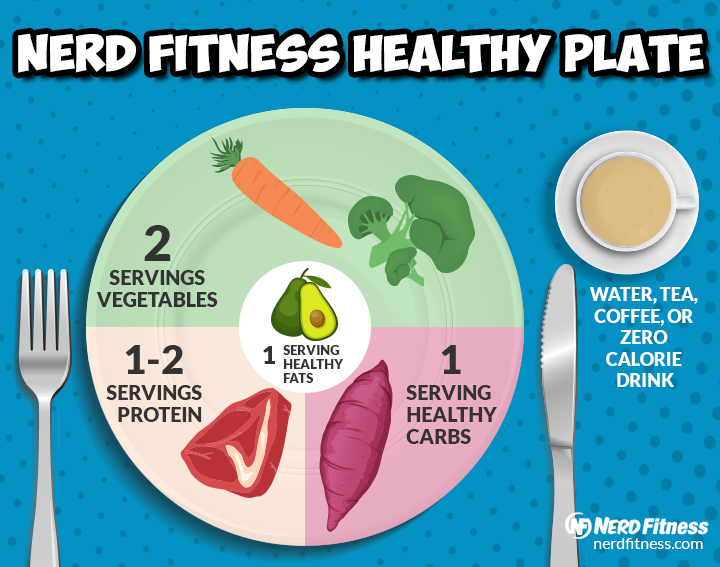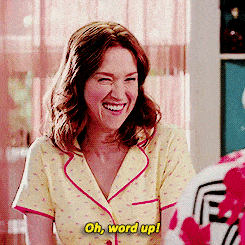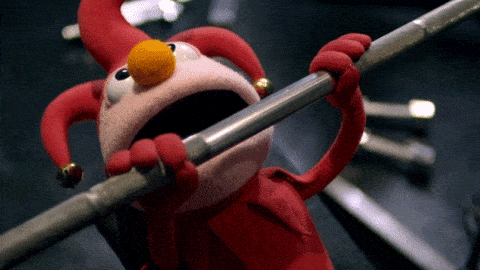Originally posted at: http://www.nerdfitness.com/

Ugh, it’s time for yet another attempt at losing weight.
For some, losing weight is as simple as just looking at a vegetable.
For the rest of us mere mortals, it feels like running through quicksand.

Fortunately, helping people lose weight in a way that doesn’t suck is what we do!
And gosh darnit, we’re really good at it: we have thousands of success stories and 1 million+ people tune in each month for advice on this stuff.
We help our Online Coaching Clients lose weight without dieting, and these are the exact tactics we use.
I’m going to cover EVERYTHING you need to know about losing weight quickly, sustainably, and without hating everything. Click below for more help:
- Why diets don’t work!
- Rule #1) Lose Weight Without Dieting.
- Rule #2) Prioritize Protein and Veggies.
- Rule #3) Know Your Carbs and Fats.
- Rule #4) Exercise for Weight Loss.
- Rule #5) Strength Training For Weight Loss.
- 25 tips to supercharge your weight loss.
- How fast can I lose weight?
- The best way to lose weight.
Why Diets Don’t Work

If you’re reading this guide, you probably:
- Have gone on a diet in the past.
- Are on a diet right now.
From popular ideas like the Paleo Diet to Keto, or Plant-Based (no prob) to Intermittent fasting (I do it), to terrible ideas like the Military Diet, juice cleanses, or the Cabbage Soup Diet, we’re all looking for that master key that unlocks effortless weight loss.
Some of these diets are certainly more effective/healthy than others, but they all come down to two truths for losing weight:
Truth #1: Nearly every diet works in the short term.
Truth #2: Nearly every diet fails in the long term.
So why does every diet work in the short term?

Every diet you have ever tried has a clever way of restricting calories which leads to weight loss[1]:
- Paleo Diet: Eliminate everything but veggies, meat, fruit, and nuts.
- Keto Diet: Remove an entire macronutrient from your diet (carbs).
- Plant-based Diet: Only eat vegetables and foods from plants.
- Carnivore Diet: Only eat meat! Eliminate everything else.
- Intermittent Fasting: Skip an entire meal, or don’t eat for 24 hours.
99% of the reason why these diets result in short term weight loss is that they get us to eat fewer calories.
The problems arise when we get to Truth 2:
“Nearly every diet fails in the long term.”
Put another way: “Temporary changes create temporary results.”
If somebody “goes Keto” for 60 days, they’ll probably lose weight, and might even feel healthier.
This is cool.
HOWEVER.
If they spend those 60 days dreaming of carbs, counting down the days until they can “go back to eating like normal,” they will put all of the weight back as soon as they stop their diet.

This is why I hate the term “diet” or “going on a diet”: In order for a diet to create permanent results, the diet needs to be adopted PERMANENTLY!
You’ll achieve weight loss in the short term with pretty much any diet you pick, as long as it gets you to eat significantly fewer calories.
However, today we’re going to focus on weight loss with 2 important conditions:
- Permanently: No more yo-yo dieting. No more rollercoaster on the bathroom scale.
- Enjoyably: We’re not miserable and hating our lives while making these changes.
So, as you read about the 5 rules of weight loss below, I want you to be honest with yourself. You need to make changes you can stick with for at least a year.
If a change seems too drastic, or giving up a food seems too scary, make the “win scenario” smaller.

Here’s how we help our coaching clients: we work with them to pick ONE change per week that we can implement: one less soda, try one new vegetable, etc.
In other words, we STOP thinking about “How many pounds can I lose in a month?” and instead “What can I do today that isn’t scary, but will make me better off a year from now:“
Rule #1: Lose Weight Without Dieting

There’s only ONE big-ass rule you need to follow when it comes to weight loss:
Eat fewer calories than you burn.
(Yes, I realize this article has 5 RULES, but the other 4 all build on this one.)
Study[2] after study[3] after study[4] shows that our bodies obey the laws of thermodynamics and that in order to lose weight, we need to burn more calories than we consume regularly.

Every day, our body needs a certain number of calories to carry out its daily functions: making your heart beat, your brain function, getting your body to move, and all sorts of other stuff.
This is called your total daily energy expenditure, and you can calculate your TDEE here.
- When you consume more calories than you burn, your body tends to store those extra calories as fat (weight gain).
- When you burn more calories than you consume, your body will pull from fat stores for energy (weight loss).
So, in order for us to lose weight, we need to find a way to tip the energy balance in favor of “burn fat, sucka!”

Simplifying this really complex topic, we need to eat less and/or move more to get our bodies to start using our fat stores for energy.
Unfortunately, that’s where the problems start.
We humans are REALLY good at:
- UNDERestimating how much we eat.
- OVERestimating how much we burn.
When we accidentally eat more calories than we realize, and then burn fewer calories from exercise than we assume, we think we “can’t lose weight” because of our metabolism or genetics.
Nope.
It’s because we are eating too much.

And as we lay out in our MASSIVE Healthy Eating Guide, the most important factor in nutrition is eating fewer calories than you burn on a regular basis.
The best way to do that is to focus on the right kind of food:
- Protein: meat and legumes.
- Fresh fruits and high fiber vegetables.
- Healthy carbohydrates: rice, quinoa.
- Healthy fats like almonds and olive oil.
- Occasional cheese and dairy.
These foods tend to be lower in calories than processed foods that have been designed to be overeaten[6].
They fill us up but aren’t overly calorie-dense.
Which means we feel full and yet consume fewer calories than we used to.
If we can do this consistently and sustainably, we will lose weight.

To drive the point home, here are two foods, both in 200 calorie increments (courtesy of wiseGEEK):
200 calories worth of a bagel:

…and 200 calories worth of broccoli:

Which one do you think you’ll be more likely to accidentally overeat?
The bagel, duh. Who eats only 2/3rds of a bagel? Literally zero people.
So here’s how we’re going to lose weight: eat fewer calories without realizing it, and then burn extra calories without being miserable:
- Prioritize protein and vegetables on your plate: target 2 fist-sized servings of vegetables, and 1-2 palm-sized portions of protein on the plate.
- Learn portion sizes of fat and carbs: If you aren’t losing weight, these are the culprits. Cut back on the one you’re eating more of.
- Exercise for weight loss: Strength training is the most efficient way to lose fat. Strength train 3x per week, and then mix in fun cardio and move as much as possible.
Let’s dig into these 3 things next:
Rule #2: Prioritize Protein and Vegetables

If our plan is weight loss that doesn’t suck, we’re gonna build better meals full of foods that fill us up and make us feel good.
PART A) PRIORITIZE PROTEIN FIRST: Protein is fuel for our bodies to rebuild muscle. It’s also delicious and nutritious and can satiate us with an efficient number of calories.
How much protein should you eat? As we cover in our Protein Guide, aim for 1g per lb of bodyweight (2g per kg) every day (with an upper limit of 250g).
Protein can come from any number of sources, including:
- Meat (steak, bison, pork).
- Fowl (chicken, turkey, duck).
- Eggs![7]
- Fish and shellfish (salmon, tuna, shrimp).
- Legumes (black beans, chickpeas).
Not a meat-eater? Read our massive plant-based guide!
A serving of protein is about the size and thickness of your palm.

*The 4 oz serving is for an uncooked piece of meat. Cooking reduces about 25% of the weight, bringing it down to about 3 oz.
When building a plate, aim for the following amount of protein:
- Dudes: 1-2 servings (6-8 oz or about 170-228 g): two palms
- Dudettes: 1 serving (3-4 oz or about 85-114 g): 1 palm.
PART B) HALF OF YOUR PLATE SHOULD BE VEGETABLES: Veggies can be the difference between weight loss success and failure.

Vegetables are nutrient-dense but calorie-light, which means you can eat lots of them, you’ll feel full, but you’re unlikely to over-consume calories (remember that mountain of broccoli was only 200 calories!).
A serving of veggies is about the size of your fist, and 2 servings of veggies should take up ½ the plate!

Here’s a quick, non-complete list of veggies that can fill your plate:
- Broccoli
- Broccolini
- Cauliflower
- Spinach
- Kale
- Spaghetti squash[8]
- Brussels sprouts
- Zucchini
- Cucumber
- Carrots
- Onion
- Asparagus
“But Steve, I don’t like vegetables…yet!”
That’s cool, I didn’t eat vegetables until I was 22. Now, they’re a main staple of every meal I eat.
If this is you, read our guide on “how to make vegetables taste good.”
RECAP: In our quest for weight loss that doesn’t suck, we need to focus on foods that have lower amounts of calories but still make us feel full and satiated and happy.
Always start with protein and vegetables, and then the rest of your plate can have fats and carbs.
Speaking of which…
Rule #3: Know Your Carbs and Fat Portion Sizes.

If 3/4ths of our healthy plate is occupied by protein and vegetables, where do fats and carbs fit in?
You can still lose weight by consuming fat and carbohydrates, when consumed in the right quantities.
Remember how I said earlier “we UNDERestimate how many calories we eat every day?”
Fat and/or carbs are almost ALWAYS the culprit.

Let’s discuss.
PART C) HEALTHY CARBOHYDRATES FOR THE WIN. Everybody loves carbs, but most people overeat this macronutrient without realizing it.
Here are some examples of healthy carbohydrates that are less likely to be overconsumed:
- Fruit, fresh or frozen.
- Rice, Brown or white.
- Legumes, lentils.
- Quinoa.
- Potatoes.
- Sweet potatoes.
- Yams.
- Whole grain bread.
- Whole grain pasta.
This is a list of REAL foods, minimally processed, that also have plenty of fiber[9].
This then puts them in the “healthy carbs” category: when consumed in proper proportion, these are great foods that can help you feel full and give you energy and all that jazz.
Just make sure you know your portion sizes!
EVERYBODY accidentally overeats carbohydrate-heavy foods, even healthy ones, and then wonders why they aren’t losing weight.
To help you get better at eyeballing carb serving sizes:

1 serving of a starchy carbohydrate is 1 cupped hand (uncooked), or two hands forming a cup (cooked).
Here are some images to help you learn proper portion sizes (thanks to SafeFood):

PART D) DON’T FORGET ABOUT FAT!
Fat used to be vilified, but now it’s considered a superfood by many.
Here’s the truth: fat is neither a superfood nor evil.

It’s just a macronutrient that we can eat that can help us lose weight when consumed in the right quantity, or keep us from our goals if we eat too many calories of it.
Healthy fat can be found in foods like:
- Avocado
- Almonds
- Walnuts
- Macadamia nuts
- Olive oil
- Almond butter
- Peanut butter
Saturated fats – consumed in moderate quantities[10] – can come from things like:
- Whole milk
- Full fat dairy
- Coconut oil
- Grass-fed butter
- Lard
- Fatty cuts of meat
To help you gauge: a serving size of fat is roughly the size of your thumb!

THIS is a single serving of almonds (162 calories):

THIS is a serving of olive oil (119 calories, taken from Runtastic):

What about cheese? Cheese is fine, provided you consume a proper sized portion of it!
This is a portion of cheddar cheese (116 calories):

So bringing them all together, here’s the healthy plate for weight loss (from our Healthy Eating Guide):

If you can prioritize protein, fruit, and vegetables, and keep your carb and fat intake under control, you are going to lose weight.
“But Steve, what about low-fat diets? Low-carb diets? No-carb diets?”
Low carb diets like Keto and Paleo are all the rage right now, but are they healthy and will they help you lose weight?

Maybe!
It depends on how your body regulates glucose (blood sugar)[11]:
Studies show that people who follow EITHER a low-fat OR a low-carb diet will lose weight, as long as they are in caloric restriction and can adhere to the diet for at least a year[12].
So, it comes down to: “which strategy are you more likely to stick with for a year or longer?”
If you think you can go Paleo or Keto or follow another low carb/low fat strategy for over a year, go for it.
Otherwise, make small changes!
MY ADVICE: Stick with changes that aren’t too scary. Work on reducing portion sizes or adding a new vegetable each week, and don’t get dogmatic, all-or-nothing about your diet!
If you can find a way to reduce your total calorie intake without being miserable, you WILL lose weight over time, AND keep it off.
There’s one other piece of the puzzle I HAVE to address.
Rule #4: Exercise for weight loss (Strength training and cardio)

Although exercise isn’t necessary for weight loss (nutrition being the most important part), I would HIGHLY recommend you exercise.
There are three forms of exercise that I’ll cover when it comes to weight loss, and ALL three of them are important:
- Fun cardio: movement of any kind that gets your heart pumping (good).
- Interval training: variable rate training: “run, jog, run, jog” (better).
- Strength training: challenging your muscles to get stronger (best).
#1) Fun cardio is doing any sort of exercise that gets you off your butt and moving.

It makes our heart healthier, AND it can serve as a reminder that we’re doing things differently now, and that we need to eat better so we don’t ruin our efforts!
(Whatever you do, DON’T say: “Welp, I exercised – and thus I earned this donut and Coca-Cola” – you’d have been better off NOT exercising and skipping the donut and Coca-cola).
Here are 40 fun ways to exercise without realizing it. Feel free to do a fun activity as often as you can!
#2) High-Intensity Interval Training (HIIT) burns more calories per hour than steady cardio, so you get more “bang for your buck” when it comes to efficiency.
If you’re limited on time and trying to burn more calories, 20 minutes of HIIT burns more calories than 20 minutes of steady jogging.
Here are 3 HIIT workouts you can do today, no gym required!

Both of these activities can help tip the energy balance in favor of “weight loss” when combined with calorie restriction.
When you’re in a “caloric deficit” for weight loss, the hope is that your body will mostly pull from fat stores, though depending on how you are exercising it will also break down muscle too.[13]
Said again: when you are eating a caloric deficit, your body will pull from both its fat stores AND existing muscle for energy.

From a physique and health standpoint, obviously we’d prefer that we don’t break down muscle when in a caloric deficit, and instead get our body to use ONLY fat stores.[14]
Your goal in fitness shouldn’t only be “weight loss,” despite the common vernacular used.
The goal instead is to reduce body fat while also keeping the muscle you have (or even building more muscle).
Which brings me to the most important form of exercise for weight loss:
Rule #5: Strength Training For Weight Loss

#3) Strength training is the prizefighting champion when it comes to weight loss.
You can find study[15] after study[16] after study[17] that shows you the benefits of strength training for weight management when combined with “calorie restriction.”
Let me explain it here quickly, borrowing from Harry Potter:
(You know, the wizard.)
At the Hogwarts School of Witchcraft and Wizardry, when each student arrives they put on the “Sorting Hat,” an actual hat that determines which House (group) that child will join for his/her time at Hogwarts.
The hat acts like a traffic director:
“Harry, you will go to Gryffindor! Draco, you will go to Slytherin!”

Your body operates in a VERY similar fashion: every day, it receives new calories (when you eat), and it needs to decide what to do with them!
It’ll sort those calories into one of three Houses:
A: Burn for Fuel.
B: Rebuild Muscle.
C: Store as Fat.
There’s a number of calories your body burns each day just existing: to keep your liver functioning, your heart pumping, your brain operating, and so on – it burns a good chunk of calories just keeping the lights on.

Here are two quick examples (from our TDEE calculator!):
- A 6’, 34-year old male weighing 250 pounds burns 2,300 calories a day just by existing.
- A 5’5”, 40-year old female weighing 140 pounds burns 1,350 calories a day just by existing.
When you start strength training, actual wizardry starts to happen.
When you do push-ups and pull-ups or do a strength training workout, your muscles are “broken down” during the exercise itself, and then they rebuild themselves stronger over the next 24-48 hours.
Guess what happens during those 24-48 hours?
Your body diverts as many calories as possible to “Rebuild Muscle!”
It also diverts additional calories to “Burn as Fuel” to handle this increased “muscle rebuilding” activity.
Which means two amazing things:
- Rebuilding muscle is a calorie taxing activity!
- Your metabolism is revved up for this period of time, burning more calories than normal.
There are significantly fewer calories available for “Store as Fat.”
AND THEN IT GETS BETTER.

When you consume fewer calories than your body burns each day, strength training will cause your body to get even more efficient.
Your body can pull from “Store as Fat” to make sure all the work still gets done, including your daily functions as a human, and rebuilding the muscle.
This is the Tri-wizard cup[18] of physical transformation victory:
- You get stronger and keep the muscle you have.
- You burn through the fat you’re trying to get rid of.
- You’re decreasing your body fat percent and keeping your muscle = look good naked.
This would be a “win-win-win” according to Michael Scott, Regional Manager, Dunder Mifflin Scranton.
So NO, you don’t need to lose weight first before you start strength training.
You will lose weight BY strength training (and keep the muscle you have).
Here’s how to start with Strength Training:
- No gym? Try our 20-minute Beginner Bodyweight Workout Routine.
- Pick one of our 5 Beginner Strength Training Workouts.
- Gym newbie? Try our 6-level Gym Strength Training Routine.
BRINGING IT ALL TOGETHER: Doing a strength training workout 3 times per week is the most efficient way to lose the right kind of weight and look better naked.

Adding in intervals or fun exercise on your off days is a fantastic supplemental activity to strength training.
Want help learning how to strength train? You can absolutely build your own workout, or you can work with one of our coaches who can create a custom program that’s specific to your goals and lifestyle.
We’ll even make sure you’re doing the movements correctly via video, because we’re nice like that 
25 Tips to Supercharge Weight Loss

The 5 Rules Above give you the best chance to lose weight in a way that doesn’t suck.
Changing your nutrition is like playing a video game: if you attack too many high-level bad guys at once, you’re going to lose.

Instead, you’re better off picking 1-2 smaller bad guys (changes) that you know you can win, and level up slowly.
THAT’S how you make changes that stick.
No more temporary dieting for temporary results!
Permanent changes create permanent results.
Here are 25 other quick tips that are supplementary to the above important ones!
1) Consider low-carb OR low-fat diets. Studies show BOTH low-carb and low-fat diets will result in weight loss, IF you can stick with it.[19]
Many people tend to have more success faster on low carb, but they’re also more likely to abandon the diet. You don’t need to do Keto or Paleo if you don’t want to, and instead, just work on reducing carbs overall.

2) Consider intermittent fasting. Fasting helps you keep your caloric intake under control by eliminating or narrowing your eating window – it simply means skipping a meal or occasionally doing 24-hour fasts.
It affects men and women differently, but has tons of benefits and is backed by science. Read our Guide on Intermittent Fasting. I’ve been skipping breakfast since 2014!
3) Minimize liquid calories. Beverages with calories in them are probably sabotaging your weight loss efforts.

Cut out the sodas and lattes and high-calorie smoothies (unless you account for them in your calorie goal!). Stick to sparkling water, black coffee or tea, or other zero-calorie beverages.
4) Cut back on alcohol. Yes, you can still drink alcohol and lose weight, but you still need to account for the calories, of which there might be many!
And if you make poor food choices while drunk, it’s going to be tough to lose weight. Read our guide on alcohol and stick to low calorie beer, whiskey neat, or vodka with club sodas.

5) Know your condiments and cooking oils. Just because you’re eating grilled chicken and vegetables doesn’t mean you’re guaranteed to lose weight!
If those foods are smothered in sauces or covered in 1000 calories of healthy olive oil, the calories still count! Keep an eye on the sauces and oils you use to cook with.
6) Know your next meal. Most of our coaching success stories plan in advance what their next meal is.
Because it’s a pre-made decision, it removes emotion and makes them less likely to make a bad choice while hungry, sad, or angry.
Think of it this way: you can still eat unhealthy foods with this strategy because you plan ahead and can eat a healthy meal before and after. No harm done!
7) Look at restaurant menus before going. Restaurants give out notoriously large portions of food, often with hundreds of hidden calories.
Give yourself the best chance to succeed by looking up the menu online before going and decide BEFORE you get there.

Also, consider taking HALF the entree and boxing it up for an additional meal (A tip we mention in our Guide to Portion Control).
8) Eat the same foods over and over. The healthiest, most successful coaching clients we have tend to eat the same handful of meals over and over.
Once you learn portion sizes and calorie counts of your favorite meals, you’re much more likely to eat within your goals for the day.
9) Learn to batch cook. Read our guide on batch cooking! If you can prepare all your healthy meals ONCE at the beginning of the week, you are setting yourself up for success.

Why? Because now your default, easiest, laziest option is to simply reheat and eat the food you have at home – much less work than ordering takeout or driving to fast food! Win-Win-Win.
Here’s how I batch cook chicken for the week:
10) Employ the “Never 2 in a Row” rule. If you ever eat an unhealthy meal, simply make the next one healthy.
One bad meal doesn’t ruin a day, so letting an unhealthy breakfast derail you for the rest of the day isn’t smart.
Simply eat a healthy lunch and get right back on track.
11) Ask “What would Batman do?” If you’re not sure what you should eat, ask what would Batman do.
A study showed that children were more likely to pick an apple instead of candy when instructed to ask this question.[20]

And we’re all kids at heart, right?
12) Track your calories. If you can’t lose weight, it’s most likely because you’re accidentally eating more calories than you realize. Use an app or spreadsheet and track your food for a week.
I bet your intake is 20-40% higher than you realize! You can calculate how many calories you burn every day too.
13) Weigh your food (advanced): STILL not losing weight? It’s time to get your portion sizes fixed too.
Get a cheap food scale and weigh your food for 2-3 days. Doing this, I discovered I was eating an extra 400 calories without realizing it.
14) Eat more slowly!

If we’re not careful, we can eat more than we realize because we eat too quickly for our body to understand it’s full!
Tactics to help with this include consciously working on chewing your food more frequently before swallowing.
Studies show eating slowly led to decreases in energy intake within meals in healthy women.[21]
15) Use smaller plates and forks! If we have big plates and big utensils, we’re more likely to pile more food on our plate AND consume it more quickly.
Throw out your big plates and get smaller ones. Get smaller utensils, and you’ll trick yourself into eating smaller portions without realizing it.[22]
16) Don’t “Eat AND [activity].” Just “eat.” We eat more food if we’re eating while doing something else (watching TV, scrolling through our phones, etc.).[23]
Why don’t you try JUST eating? Enjoy each bite. Savor the food. Make it an experience. You’ll tend to eat less.

17) Stop snacking. All calories count. Instead of snacking throughout the day, why not eat 3 regular sized meals that you truly enjoy?
As we cover in our Guide to Intermittent Fasting, it doesn’t matter WHEN you eat, it only matters HOW MUCH you eat. Not snacking between meals gives you more leeway during your actual meals!
18) Seek professional help! If you have an emotional relationship with food, consider speaking about it with a therapist or doctor.
We believe mental health is really important here at Nerd Fitness, and we know food can be an emotional trigger for lots of people that struggle with their weight. You don’t have to do this journey alone!
19) Fidget more! From tapping your toes to getting up frequently, fidgeting (small micromovements) can account for up to 350 additional calories burned per day.[24] It all counts. So get wiggling!
20) Move more. From parking farther away at the grocery store to taking the stairs instead of the elevator, do whatever you can to MOVE MORE!
Get a cheap fitness tracker and try to get more steps than you normally do.

Don’t rely on the tracker for calories burned (they’re all notoriously inaccurate), but it’s a great ‘trend tracker.’ Do more than you did before and you WILL get results.
21) Find ways to exercise in a fun way! ANY sort of movement helps, so check out our 40 ways to exercise without realizing it.
Dance, yoga, wrestling with your kids, rock climbing, hiking, it all counts! Just like your parents told you when you were a kid, “Go outside and play!”
22) Get strong as hell. Pick up heavy weights.

Our bodies have to burn tons of calories to recover from a heavy strength training session.
Plus, you get to keep the muscle you have and burn the fat on top of those muscles. That’s how you lose weight AND gain muscle at the same time!
23) Hack your Batcave: We are creatures of our environment, so use that to your advantage! Stop relying on willpower, and instead get smarter.
Increase the steps between you and the activity you’re trying to avoid (eat junk food), and decrease the number of steps between you and the NEW activity you want to do more of (eat healthy):
- Throw out your junk food so you don’t need to waste willpower not eating it.
- Put a bowl of fruit on the counter so your default activity becomes “eat fruit!”
24) Surround yourself with people who are healthier than you. We’re the average of the 5 people we associate most with.

Join a running club. Eat lunch with healthier people than you at the office.
We subconsciously adopt the traits of the people around us, so use that to your advantage!
25) Forgive yourself. We are all flawed. If you eat a bad meal or have a rough weekend, who cares?!
The month is not ruined. Make the next decision a healthy one and get right back on track. Remember “never two in a row.”
I know this is a lot to absorb, so don’t beat yourself up if you’re totally overwhelmed!
If you want help implementing these tactics and supercharge your weight loss journey, that’s what we do best. Click below to learn more!
How fast can I lose weight?

There are MANY factors that are involved in how quickly you can lose weight, but here are the big ones:
- How much weight do you need to lose? Somebody who needs to lose 250 pounds will be able to lose more weight than somebody who needs to lose 10 pounds, simply because there is more weight to lose.
- How big of a caloric deficit below your TDEE are you doing? If somebody normally eats 5000 calories per day and switches to 1500 calories per day, they’ll lose weight faster than if they switched to 4500 calories per day. Now, reducing calories significantly can create all sorts of “I’m miserable and hate everything” feelings as our body learns to stop expecting a ready supply of food and has to start burning fat instead.
- Are you going low-carb like Paleo or Keto? As you’ll see below, cutting out carbs can create significant weight loss in the first weeks due to a reduction of ‘water weight and bloat.’ But cutting out carbs might also make you miserable!
First Week Weight Loss Expectations: Depending on how poorly you eat now, if you swap out unhealthy food for protein and veggies – reducing your calorie intake significantly – you might lose upwards of 5-10 pounds (5kg) in your first week.

It’s awesome to see the scale drop by that much in the first week, but it’s important to note that this type of weight loss won’t be typical week to week.
If you normally eat a lot of carbs and sodium, your body is carrying a lot of extra bloat and water weight. When you switch to mostly protein and veggies, you’ll lose TONS of water weight and some fat initially.
We’ve seen many Coaching Clients lose 5-10 pounds in their first week, again mostly due to the reduction of water weight with SOME fat loss.
First Month Weight Loss Expectations: Depending on how strict you are with your nutrition – you can lose 1% of your body fat, or 1-3 pounds per week after that (heavily dependent on how much weight you have to lose).
We have seen people (who have a lot of weight to lose) lose 20 pounds in their first month, mostly due to large water weight reduction in the first week, with a steady consistent drop after that.
(Curious how quickly you can lose weight? Use our Total Daily Energy Expenditure TDEE Calculator.)
There’s nothing wrong with losing weight quickly, provided you’re doing it in a healthy, SUSTAINABLE way – like following the rules and strategies laid out in this article.
Quick weight loss doesn’t guarantee long term success.
It comes down to making PERMANENT changes!
If somebody reduces their calorie intake by 1000+ calories a day, they might be so damn hungry and angry all the time that they abandon their journey after a week or two.
This is bad news bears.

They would have been better off reducing their calories by 200 calories a day for 6 weeks, and then by another 200 6 weeks later, and so on.
We want sustainable changes, and sustainable weight loss, creating permanent progress.
So it doesn’t really matter how much weight you lose in your first week or first month, but rather how much weight you have lost after 1 year, and how you feel after that year.
As we cover in our “Why can’t I lose weight?” guide, this is a lifelong journey, and one you should be thinking about as a lifestyle adjustment and not a temporary diet change.
Put your focus on building the habits and fixing your environment. Focus on the changes you can make on a day to day basis, and with each meal.
And over time, your weight WILL drop in a way that’s sustainable and healthy.
How to Lose Weight Quickly

“STEVE JUST TELL ME EXACTLY WHAT TO DO TO LOSE WEIGHT QUICKLY.”
Fine! But you don’t need to yell at me like that!
Here’s what I would do if I needed to lose weight quickly but ALSO didn’t want to hate life:
- Focus MOST of my effort on building a healthy plate.
- Cut out all snacks between meals. Focus on making better meals.
- Cut way back on booze and only drink zero-calorie beverages (black coffee, sparkling water).
- Learn to cook a veggie or two and prioritize protein.
- Strength train 3 days per week, probably following THIS gym routine.
- Move as much as possible, tracking my steps with a Fitbit.
- If the scale doesn’t go down, start tracking calories and measuring food.
I’ll leave you with some final words of wisdom: this is NOT all or nothing.
If you can implement just ONE change and stick with it, that’s a victory. That’s better than doing 10 things and giving up after a month.
I realize I threw a LOT of information at you, but I hope you can implement this stuff in your day-to-day decisions, because these rules WILL change the scale, and they WILL change your life.
If you are looking for more guidance, support, and instruction, we have 3 options for you to level up:
#1) JOIN OUR COACHING PROGRAM: We provide nutritional guidance, constant feedback and support, customized workouts for your goals, and keep you accountable wherever you are.
We are really good at this stuff and would love to help you reach your goals.
2) Exercising at home and need a plan to follow? Have questions you need answered? Join Nerd Fitness Prime!
Nerd Fitness Prime is our premium membership program that contains at-home exercise routines, live-streamed workouts with NF Coaches, a supportive online community, group challenges, and much more!
#3) Join The Rebellion (it’s free)! Sign up for our biweekly newsletter and join the Nerd Fitness Rebellion!
I’ll send you tons of free nutritional guides and bonuses to help you get started on your journey today.
Sign up below:
- Follow our 10-level nutrition system at your own pace
- What you need to know about weight loss and healthy eating
- 3 Simple rules we follow every day to stay on target
If you were just trying to start building healthier habits and lose weight sustainably, instead here’s what I would do:
Make 1 change per week.
Change ONE meal a week, or cut back on ONE soda. Make a change that’s so small that it doesn’t make you sad or scared.

And then repeat.
What’s the ONE change you’re going to make this week to make your weight loss journey SLIGHTLY easier?
-Steve
PS: Make sure you check out the rest of our Sustainable Weight Loss Content:
- Why Can’t I Lose Weight?
- How to Start Eating Healthy (Without Giving up the Food You Love)
- How to Lose Weight and Build Muscle at the Same Time.
- How to Portion Control (Without Counting Calories)
###
Photo Source:[25]
- This report highlights that portion control and calorie restriction are central to weight management.
- Like this study on sustainable weight loss
- Or this one on an energy deficit and weight loss.
- Or this one on weight loss predictions based on calorie intake and patient lifestyle.
- (The term is “hyperpalatability,” and it means the food has been designed to overcome our body’s natural inclination to stop eating when we’re full).
- Dietary cholesterol doesn’t influence blood cholesterol levels as much as conventional wisdom once thought. Go ahead and eat eggs!
- Read our article on how to prepare “paleo spaghetti!”
- Fiber is a carbohydrate that can’t be broken down by the body, so it travels through you relatively intact. However along the way it can do all sorts of good stuff! For example, increased fiber intake can help reduce blood glucose levels.
- In case you’re worried about saturated fat, here’s a systematic review that found no link between saturated fat intake and a greater risk of all-cause mortality.
- Low-Fat or Low Carb for Weight Loss? It Depends on Your Glucose Metabolism: Pubmed
- You can see the Pubmed extract for more information.
- Check out this study on energy deficits and fat loss and read a study on calorie deficits causing muscle loss right here and here.
- Here’s a study on the importance of lean muscle right here.
- Like this one.
- Or this one.
- And this one.
- With a happier ending.
- You can scope out one such study here.
- You can check out this article from Cornell University on the topic.
- You can see the study here.
- This landmark 2012 paper correlated plate size and portion control, although it has since been called into question.
- This study looked at kids watching TV and the risk of obesity.
- As pointed out here by the New York Times
- LEGO Shop, Newbie photographer, Laughing Budda, almond serving size, olive oil, raisins, Cheddar Cheese, Are you ready for some football, Happy Monday, Speed, Run,




 Things are going great. You’re eating well, moving your body regularly, lifting heavy things, getting good sleep. Then wham! Something happens, and all your best laid plans are out the window. Maybe it’s a crisis at work, the loss of a loved one, a vacation, or, I don’t know, a global pandemic that changes everything. Sometimes it’s nothing memorable, you just sort of… stop trying.
Things are going great. You’re eating well, moving your body regularly, lifting heavy things, getting good sleep. Then wham! Something happens, and all your best laid plans are out the window. Maybe it’s a crisis at work, the loss of a loved one, a vacation, or, I don’t know, a global pandemic that changes everything. Sometimes it’s nothing memorable, you just sort of… stop trying.
 Male menopause is a real thing, and the medical term for it is andropause. According to the Mayo Clinic, the term “Male Menopause” has been used to describe decreasing testosterone levels related to aging. See
Male menopause is a real thing, and the medical term for it is andropause. According to the Mayo Clinic, the term “Male Menopause” has been used to describe decreasing testosterone levels related to aging. See  About Peter Montpelier, Health Coach/Longevity Expert at Team Appollon LLC
About Peter Montpelier, Health Coach/Longevity Expert at Team Appollon LLC

 We can generally get our hands on a watermelon any time of year, but these are the months when they actually taste sweet and juicy. As soon as watermelons come into season, my Summer Watermelon Salad comes out of hiding. It’s a late summer treat that reminds us that even though we’re hearing the first whispers of school starting and pumpkin spice, it’s still summertime.
We can generally get our hands on a watermelon any time of year, but these are the months when they actually taste sweet and juicy. As soon as watermelons come into season, my Summer Watermelon Salad comes out of hiding. It’s a late summer treat that reminds us that even though we’re hearing the first whispers of school starting and pumpkin spice, it’s still summertime.
 Thinly slice the red onion and the basil.
Thinly slice the red onion and the basil.
 Season with salt and pepper and garnish with more basil leaves.
Season with salt and pepper and garnish with more basil leaves.



 For now classes are 6pm and 640pm at 2840 Wildwood st in the Boise Cloggers studio.
Book your class NOW!
click this ==>
For now classes are 6pm and 640pm at 2840 Wildwood st in the Boise Cloggers studio.
Book your class NOW!
click this ==>








